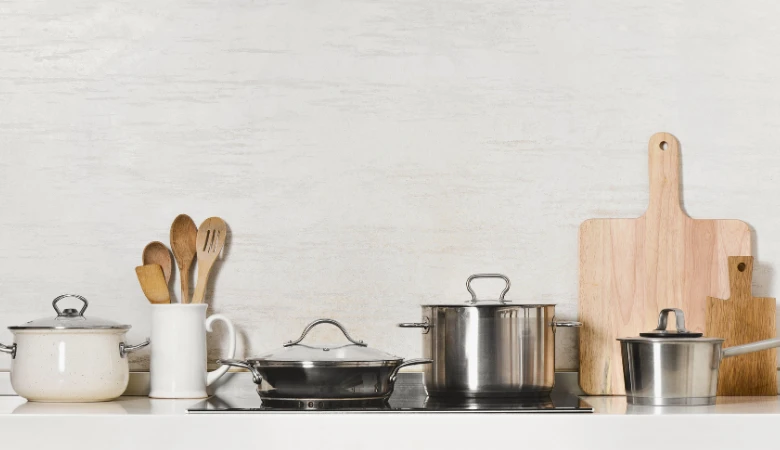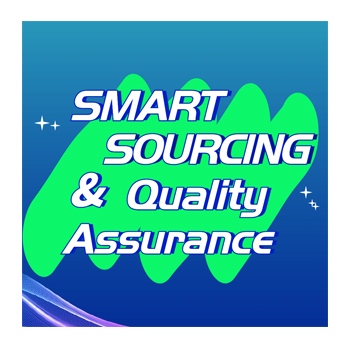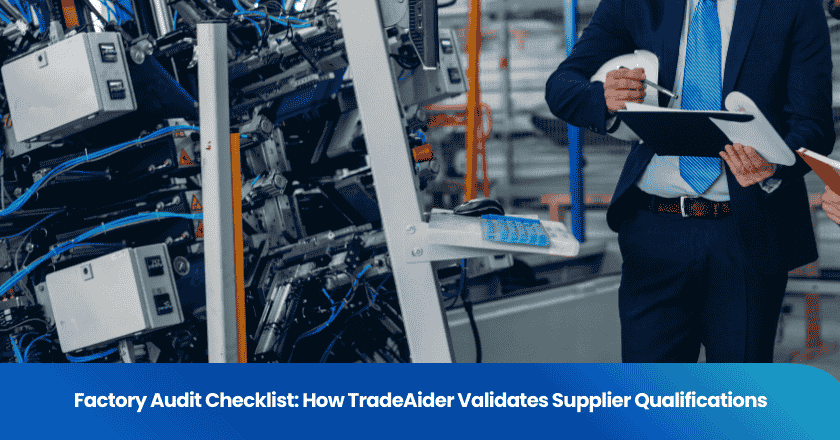
You can choose the most reliable household goods quality inspection solutions in 2025 by starting with a clear understanding of your inspection needs. Define what you expect for each product type and inspection stage. Set specific criteria for accuracy and compliance. Compare available technologies, including new inspection methods, to see which options fit your process best. Research vendors, then plan your implementation step by step.
Key Takeaways
• Start by clearly defining your inspection needs and set specific criteria for accuracy and compliance.
• Choose inspection solutions that match different stages of your supply chain to catch defects early and maintain quality.
• Prioritize accuracy, compliance, scalability, usability, and strong vendor support when evaluating inspection options.
• Test solutions with sample products and involve your team in training to ensure smooth adoption and reduce errors.
• Regularly review and improve your inspection process to stay updated with regulations and adapt to new challenges.
Importance in 2025
Standards and Regulations
You face a rapidly changing landscape of standards and regulations in 2025. Regulatory bodies continue to update requirements for household goods, focusing on safety, sustainability, and traceability. You must stay informed about these changes to avoid compliance issues. For example, new rules may require you to document inspection results digitally or use specific testing methods for certain materials.
Tip: Regularly review updates from regulatory agencies. Create a checklist to ensure your inspection process aligns with the latest standards.
You can use the following table to track key regulatory areas:
| Regulatory Focus | Example Requirement |
|---|---|
| Safety | Electrical safety testing |
| Sustainability | Recyclable material tracking |
| Traceability | Digital inspection records |
Consumer Safety
You play a critical role in protecting consumers. Quality inspection solutions help you identify defects, prevent recalls, and maintain trust. In 2025, consumers expect higher safety standards and transparency. You need to ensure that every product meets strict safety criteria before it reaches the market.
• Inspect for sharp edges, loose parts, or hazardous materials.
• Verify that labels and instructions are clear and accurate.
• Test products under real-world conditions.
Note: A single overlooked defect can damage your reputation and lead to costly recalls.
Inspection Challenges
You encounter new challenges as technology and consumer expectations evolve. Complex product designs, diverse materials, and global supply chains increase the difficulty of inspections. Manual checks may not catch every issue, especially with high production volumes.
• Adapting to new inspection technologies requires training.
• Integrating inspection data with other systems can be complex.
• Keeping up with regulatory changes demands ongoing attention.
You need to choose solutions that address these challenges and support continuous improvement. By doing so, you ensure your inspection process remains reliable and effective in 2025.
Quality Inspection Solutions
Solution Types
You have several types of quality inspection solutions to consider for household goods in 2025. Each type serves a unique purpose and fits different inspection needs:
• Manual/Visual Inspection: You rely on trained inspectors to spot defects or inconsistencies by sight and touch. This method works well for simple products or when you need flexibility.
• Machine Vision Systems: You use cameras and AI to detect flaws, measure dimensions, and verify assembly. These systems increase speed and accuracy, especially for high-volume production.
• Mobile/Cloud-Based Solutions: You collect and analyze inspection data using mobile devices and cloud platforms. This approach helps you centralize records and access real-time insights from anywhere.
• Inspection Software: You automate data collection, reporting, and compliance tracking. Software solutions streamline your workflow and reduce manual errors.
• Warehouse Control Systems: You monitor product movement and quality at different points in your warehouse. These systems help you catch issues before products reach customers.
• Metrology Equipment: You use precise measurement tools to verify product dimensions and tolerances. Metrology ensures your goods meet strict specifications.
Tip: Combine different solution types to cover all inspection needs and improve overall reliability.
Inspection Stages
You encounter several inspection stages throughout the household goods supply chain. Each stage benefits from specificquality inspectionsolutions:
| Stage | Typical Solution Types |
|---|---|
| Incoming Materials | Metrology, Manual/Visual |
| In-Process | Machine Vision, Inspection Software |
| Final Product | Manual/Visual, Machine Vision |
| Pre-Shipment | Mobile/Cloud-Based, Warehouse Control |
You can match the right solution to each stage for better results. This approach helps you catch defects early and maintain high standards.
Evaluation Criteria
Accuracy
You need to prioritize accuracy when selecting inspection solutions. Accurate systems help you detect even the smallest defects or inconsistencies in household goods. High accuracy reduces the risk of faulty products reaching your customers. You should look for solutions that offer precise measurements, reliable defect detection, and consistent results across different product batches.
Tip: Test each solution with sample products before full implementation. This step helps you verify the accuracy claims of the provider.
Compliance
You must ensure that your inspection process meets all relevant regulations and standards. Compliance protects your business from legal risks and helps you maintain consumer trust. Choose solutions that support digital record-keeping, automated compliance checks, and easy reporting. These features make it easier for you to demonstrate adherence during audits or inspections.
• Check if the solution updates automatically with new regulatory requirements.
• Confirm that it generates reports in formats accepted by authorities.
Scalability
Your business may grow or change over time. Scalable quality inspection solutions allow you to adapt quickly. You should select systems that handle increased production volumes, new product lines, or additional inspection points without major upgrades. Scalability ensures that your investment remains valuable as your needs evolve.
| Scalability Feature | Why It Matters |
|---|---|
| Modular architecture | Add or remove functions easily |
| Cloud integration | Manage data from multiple sites |
| Flexible licensing | Adjust user numbers as needed |
Usability
You want your team to use the inspection system efficiently. Usability affects training time, error rates, and overall productivity. Look for intuitive interfaces, clear instructions, and customizable dashboards. A user-friendly solution reduces mistakes and helps your staff focus on critical inspection tasks.
Note: Involve end-users in the evaluation process. Their feedback can highlight usability issues you might overlook.
Vendor Support
Strong vendor support ensures smooth operation and quick problem resolution. You should assess the level of technical assistance, training resources, and update frequency offered by each provider. Responsive support helps you minimize downtime and address challenges as they arise.
• Ask about response times for technical issues.
• Review available training materials and user communities.
• Check if the vendor provides regular software updates.
By carefully evaluating these criteria, you can select quality inspection solutions that fit your business goals and inspection requirements.
Selection Steps
Needs Assessment
You should start by identifying your specific inspection requirements. Review your product types, production volumes, and regulatory obligations. Consider which inspection stages need the most attention. List the features you expect from quality inspection solutions. This step helps you avoid unnecessary features and focus on what matters most for your business.
Tip: Involve team members from different departments. Their input can reveal hidden needs or challenges.
Feature Comparison
Next, compare the features of available solutions. Create a table to organize your findings. Focus on core functions like defect detection, data management, and reporting. Evaluate how each solution handles your unique product characteristics. Look for options that support integration with your existing systems.
| Feature | Solution A | Solution B | Solution C |
|---|---|---|---|
| Defect Detection | √ | √ | √ |
| Data Management | √ | × | √ |
| Regulatory Reporting | √ | √ | × |
| System Integration | √ | √ | √ |
Vendor Research
You need to research potential vendors thoroughly. Check their track record in the household goods industry. Read customer reviews and request case studies. Ask about technical support, training, and update policies. Reliable vendors help you maintain consistent inspection quality and adapt to future changes.
Note: Direct communication with vendors often uncovers important details not found in brochures.
Budget
Finally, review your budget. Calculate both upfront and ongoing costs. Include expenses for hardware, software, training, and maintenance. Choose solutions that offer the best value without sacrificing essential features. Remember, investing in robust quality inspection solutions can prevent costly recalls and protect your reputation.
Alert: Avoid selecting a solution based solely on price. Focus on long-term benefits and alignment with your business needs.
Solution Comparison
Pros and Cons
When you compare different quality inspection solutions, you need to weigh their strengths and weaknesses. Each type offers unique benefits and presents certain limitations.
| Solution Type | Pros | Cons |
|---|---|---|
| Manual/Visual | Flexible, low initial cost, easy to start | Prone to human error, slower for large volumes |
| Machine Vision | High speed, consistent accuracy, scalable | Requires technical setup, higher upfront cost |
| Mobile/Cloud-Based | Real-time data access, remote monitoring | Needs stable internet, data security concerns |
| Inspection Software | Automates reporting, reduces paperwork | May require integration with other systems |
| Warehouse Control | Tracks quality at multiple points | Complex to implement in existing workflows |
| Metrology Equipment | Precise measurements, ensures specifications | Specialized training needed, higher cost |
Tip: You should list your priorities before choosing a solution. This approach helps you focus on what matters most for your operation.
Best Fit Scenarios
You can match each solution type to specific scenarios for the best results.
• Manual/Visual inspection works well for small batches or unique items.
• Machine vision fits high-speed production lines where you need fast, repeatable checks.
• Mobile or cloud-based systems suit teams that inspect goods across multiple locations.
• Inspection software helps when you want to automate compliance and reporting.
• Warehouse control systems benefit operations with complex logistics and multiple inspection points.
• Metrology equipment is ideal for products with tight dimensional tolerances.
You should review your workflow and product requirements. This step ensures you select quality inspection solutions that align with your business goals and inspection challenges.
Implementation Tips
Transition Planning
You need a clear plan to move from your current inspection process to a new solution. Start by mapping out each step of the transition. Identify which systems or processes you will replace or upgrade. Assign responsibilities to team members for each task. Set realistic deadlines for every phase.
Tip: Create a checklist to track your progress. This helps you avoid missing important steps during the transition.
You should also test the new solution with a small batch of products before a full rollout. This approach lets you spot issues early and adjust your plan as needed.
Training
Your team must understand how to use the new inspection solution. Schedule training sessions for all users. Use hands-on demonstrations and real product samples to make learning practical. Encourage questions and provide clear instructions.
• Develop easy-to-follow guides or quick reference sheets.
• Offer refresher sessions after the initial training.
• Pair less experienced staff with those who learn quickly.
Note: Well-trained staff reduce errors and increase the reliability of your inspection process.
Continuous Improvement
You should not treat implementation as a one-time event. Regularly review your inspection results and gather feedback from your team. Use this information to identify areas for improvement. Update your procedures when you find better methods or when regulations change.
| Improvement Step | Action Item |
|---|---|
| Review Results | Analyze inspection data monthly |
| Gather Feedback | Hold team meetings after each cycle |
| Update Procedures | Revise checklists as needed |
Stay proactive. Continuous improvement keeps your inspection process effective and helps you adapt to new challenges.
You can secure reliable results by following a structured approach. Start with a clear needs assessment, then evaluate each option against your requirements. Test solutions before full deployment and train your team thoroughly. Regularly review your process and stay informed about industry trends. This proactive strategy helps you maintain high standards and adapt to future challenges.
FAQ
What is the most important factor when choosing a quality inspection solution?
You should focus on accuracy. Reliable detection of defects ensures product safety and compliance. Accurate solutions help you avoid costly recalls and maintain customer trust.
How often should you update your inspection process?
You should review your inspection process at least once a year. Regular updates help you keep up with new regulations, technologies, and changing product requirements.
Can you integrate inspection solutions with existing systems?
Yes, many modern solutions support integration. You can connect inspection software with your production or warehouse systems to streamline data flow and improve efficiency.
What training do staff need for new inspection technologies?
You should provide hands-on training sessions. Use real product samples and clear guides. Ongoing support and refresher courses help your team stay confident and effective.

Smart Sourcing & Quality Assurance Content Team
Article by Smart Sourcing & Quality Assurance Content Team
The Smart Sourcing & Quality Assurance Content Team is dedicated to delivering high-quality, easy-to-understand information that empowers our audience to navigate the complexities of global sourcing and quality assurance. Our team of writers has extensive experience in creating content across various fields, including procurement, supply chain management, quality assurance, market trends, and industry best practices. We specialize in sectors such as apparel, textiles, and consumer goods, providing targeted insights to help businesses in these industries optimize their sourcing strategies, ensure product quality, and maintain a competitive edge in the market.
Grow your business with TradeAider Service
Click the button below to directly enter the TradeAider Service System. The simple steps from booking and payment to receiving reports are easy to operate.

.png)

